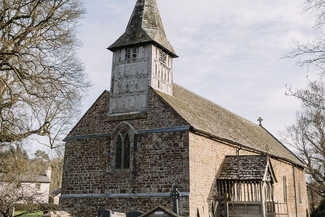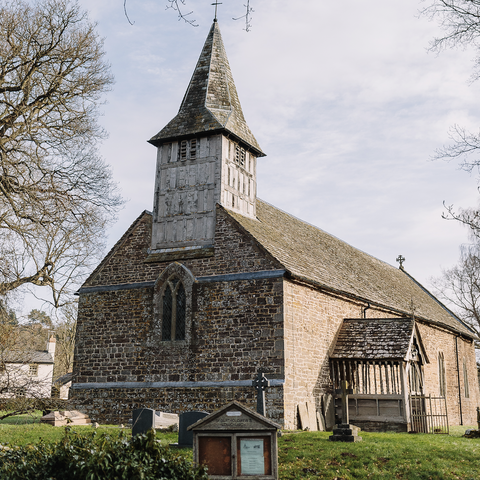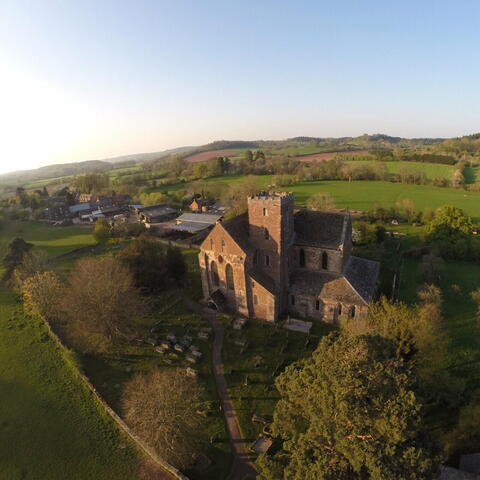Abbey Dore to Peterchurch

The pride of the valley is the serene Dore Abbey. The former Cistercian monastery, founded in 1147, became a pilgrimage centre due to its possession of a prized relic of the Holy Cross. Falling into disrepair following the 16th-century Dissolution, the Abbey was restored for worship a century later by the 1st Viscount (John) Scudamore. His largesse, following family tragedies, is thought to have been driven by guilt about his living on the proceeds of former monastic lands.

Route Guide
The trail heads for higher ground, reaching the remote small Norman church of St. Margarets. Its exquisitely carved oak rood screen is a celebrated work of art, “textured pale grey with time” in the words of poet Sir John Betjeman. Dating from about 1520, it is a rare survivor of a post- reformation order of 1547 that all such works should be destroyed. From the hamlet, 800 feet above sea level, there are superb views west over the Monnow Valley to the long escarpment of the Black Mountains on the Welsh border.
Next, wander on through the ancient 100-acre Chanstone Wood, a Site of Special Scientific Interest, noted for its abundance of small-leaved lime trees. Locally, lime was once coppiced for various uses, including wood turning, and the bark was used for ropemaking. Lime flowers were valued as a food source for honeybees.
In the valley below, two medieval churches of great charm, Turnastone and Vowchurch, stand a short distance apart on opposite banks of the River Dore. Vowchurch’s churchyard cross was once a prehistoric mark stone. From this peaceful spot, it is an easy amble alongside the Dore to the Golden Valley ‘capital,’ Peterchurch, where a spring, St. Peter’s Well, was once reputed to have healing powers.
Route Highlights










